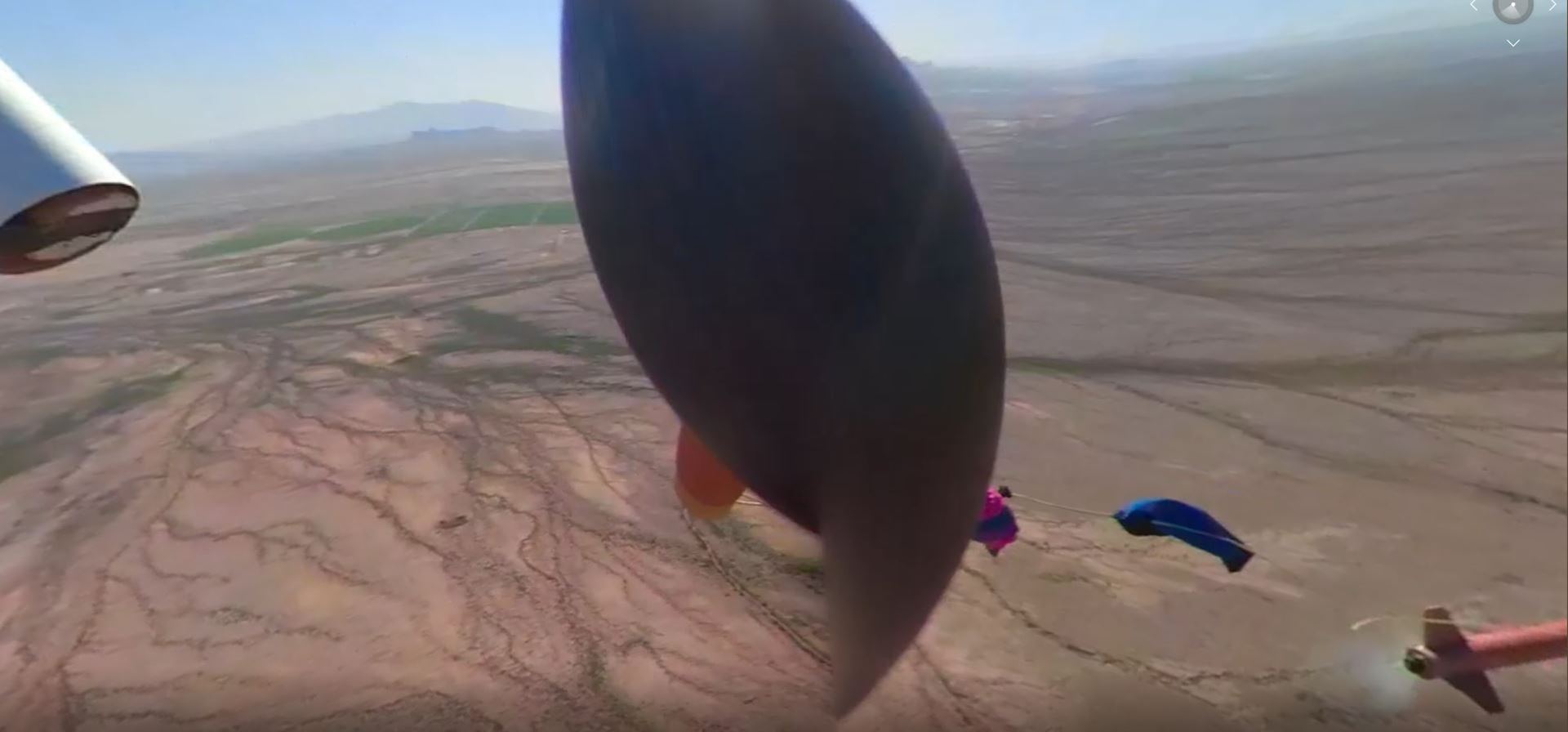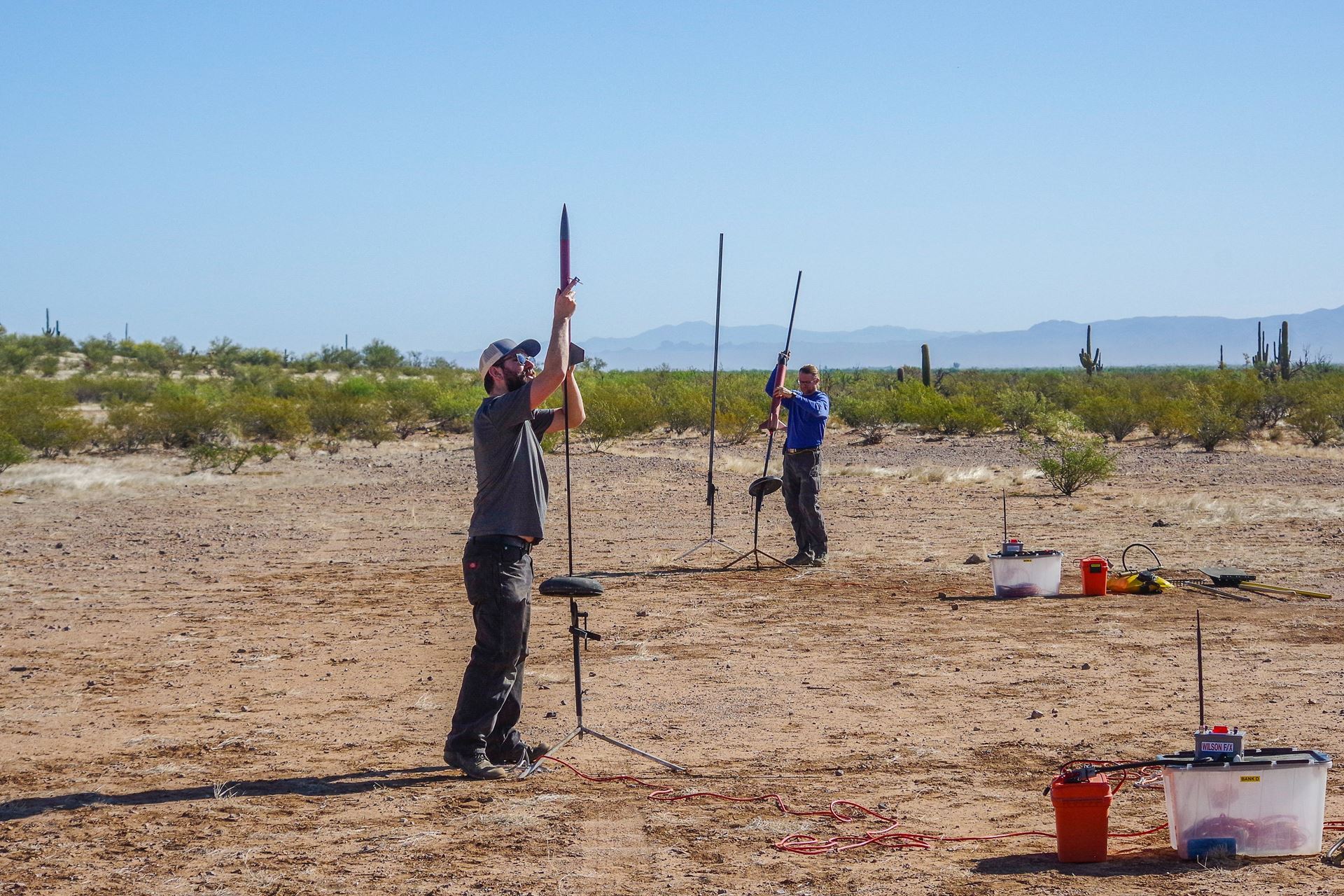 SARA held its first overnight at its new Agua Blanca launch site, in Ironwood Forest National Monument, under permit from the Bureau of Land Management. Attended by a handful of fliers, it was a class 1 launch, since we are still in the process of applying for our class 2 FAA waiver for this location. That means we were flying model rockets weighing less than 1500 grams (3.3 pounds) pad weight, with less than 125 grams of propellant. We flew a variety of low and mid power flights Friday evening and Saturday morning, with our largest flight of the day being James Cramton's H195 powered, 3 inch diameter rocket with a GoPro Fusion 360 video camera on top. The flight captured a great interactive video (click the image to view video) showing the boost phase, as well as the descent with the parachute bundled in a JollyLogic Chute Release until 500 ft above ground level. This device minimizes drift, yet still allows a slow, safe landing under parachute. A trained eye will spot the unintended release of the altimeter pod from the payload bay at apogee, but the payload and main rocket body recovered within 30 ft of each other, on the slopes of the nearby "Hill of Repression," as it is known in Google.
SARA held its first overnight at its new Agua Blanca launch site, in Ironwood Forest National Monument, under permit from the Bureau of Land Management. Attended by a handful of fliers, it was a class 1 launch, since we are still in the process of applying for our class 2 FAA waiver for this location. That means we were flying model rockets weighing less than 1500 grams (3.3 pounds) pad weight, with less than 125 grams of propellant. We flew a variety of low and mid power flights Friday evening and Saturday morning, with our largest flight of the day being James Cramton's H195 powered, 3 inch diameter rocket with a GoPro Fusion 360 video camera on top. The flight captured a great interactive video (click the image to view video) showing the boost phase, as well as the descent with the parachute bundled in a JollyLogic Chute Release until 500 ft above ground level. This device minimizes drift, yet still allows a slow, safe landing under parachute. A trained eye will spot the unintended release of the altimeter pod from the payload bay at apogee, but the payload and main rocket body recovered within 30 ft of each other, on the slopes of the nearby "Hill of Repression," as it is known in Google.
The overnight camping portion of the event was a nice way to avoid the approaching summer heat in Southern Arizona, enjoy a friendly camp out, and get our flying in before the morning heats up. Although the site has no water and no facilities, it has outstanding conditions for rocket camping, with dark skies, only wild or bovine neighbors, and an early start to flying in the morning. Keep your eyes on SARA's event calendar for more launches at this great launch site, which can support motors into the M, N, and O range once we secure an FAA waiver.
In the interactive 360 flight video, the nose cone looks like it's split in 2 because the camera has 2 lenses offset slightly. One of the great things about working with GoPro's 360 camera line is that the post-processing software does a great job of automatically leveling the horizon and providing a stable and interactive video that you can watch like you're along for the ride; you can drag the video in real time to look around. James 3D prints the nose cone with the GoPro mount built in, and the camera is secured with Kevlar line that provides a secure connection to the rest of the rocket and the parachute. Without that Kevlar, this flight would have ejected the GoPro with the nose cone, without the parachute! The camera would not have landed as safely as the altimeter bundle!
Steve Fraser also shot photos from the launch site and environs. It's an interesting location!
